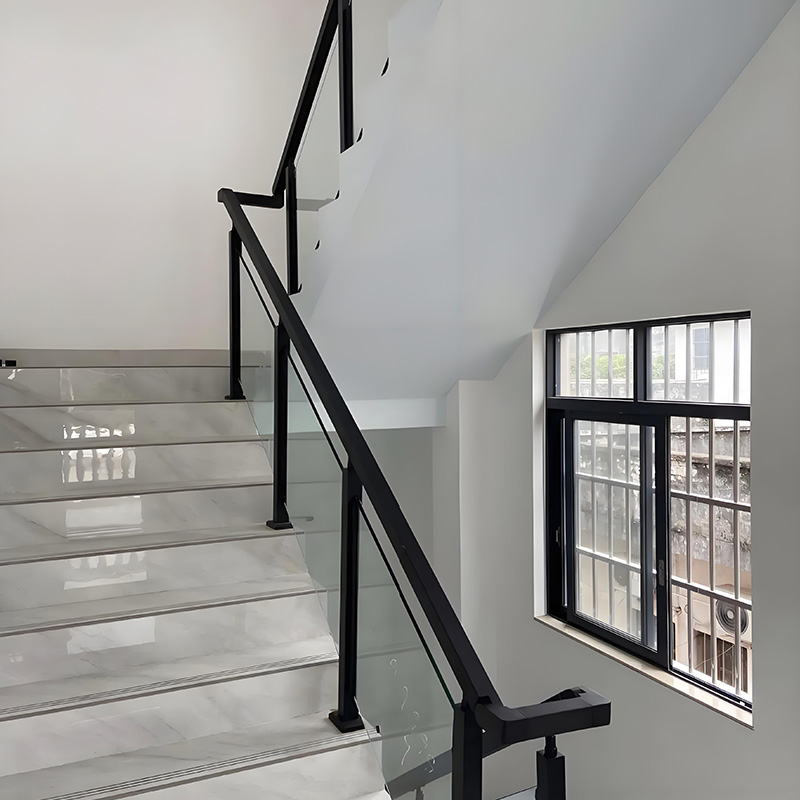Stainless Steel Stair Handrails: 6 Must-Know Safety Tips
Why Stair Handrails Are Non-Negotiable for Safety
Every year, over 1 million emergency room visits stem from stair-related accidents according to the National Safety Council. That’s where a sturdy staircase handrail stainless steel system becomes lifesaving. These rails provide critical support and balance, especially for children and seniors.
Surprisingly, many buildings still use subpar materials that corrode or wobble. We’ll explore why stainless steel outperforms alternatives and how to maximize safety.
Stainless Steel vs. Other Materials: The Safety Showdown
Choosing the right material impacts durability and injury prevention. Here’s a quick comparison:
| Material | Lifespan | Maintenance | Safety Risk |
|---|---|---|---|
| Stainless Steel | 25+ years | Low (wipe clean) | Minimal (no splinters/rust) |
| Wood | 7-15 years | High (sanding/sealing) | Splinters, rot hazards |
| Wrought Iron | 10-20 years | Medium (rust prevention) | Rust flakes, sharp edges |
Interestingly, stainless steel’s non-porous surface inhibits bacterial growth – crucial for hospitals and schools. Its strength-to-weight ratio also allows slimmer profiles without sacrificing support.
6 Critical Safety Tips for Stainless Steel Handrails
1. Get the Diameter Right
Too thick or thin? Both cause grip issues. The ADA recommends 1.25″-1.5″ diameters. For public spaces, this is often mandatory. Test different sizes during design.
2. Secure Anchoring is Everything
Loose brackets = disaster. Use minimum 3/8″ stainless steel anchors every 4 feet. In our 2025 hospital project, we found over-tightened bolts actually weakened joints – follow torque specs!
3. Mind the Gap Distance
Ever seen kids get trapped between rails? Maintain under 4″ gaps between pickets. This prevents head entrapment while allowing visibility. Measure during installation!
4. Height Precision Matters
34″-38″ from stair nose is the universal safety sweet spot. Incorrect height forces awkward leans that cause falls. Use a laser level during planning.
5. Choose the Right Finish
Slippery polished steel? Bad news when wet. Opt for brushed or textured finishes. For coastal areas, marine-grade 316 stainless resists salt corrosion better than standard 304. Check out this stainless steel handrail with non-slip grooves.
6. Continuous Gripping Surface
Hands shouldn’t need to reposition mid-staircase. Extend rails 12″ beyond top/bottom steps. This provides stability when starting/ending ascent.
Step-by-Step Installation Guide
- Measure & Plan: Calculate stair angle and required length (add 10% for errors)
- Mark Bracket Points: Every 4 feet on stringers using chalk line
- Pre-Drill Holes: Use carbide bits for concrete/metal studs
- Mount Brackets: Apply thread locker on bolts to prevent loosening
- Secure Handrail: Slide onto brackets – torque fasteners to 15-20 ft-lbs
Pro Tip: Temporary support jigs prevent sagging during installation. Remove after final tightening.
Common Safety Mistakes (Avoid These!)
Warning: Never use dissimilar metals (e.g., aluminum brackets with steel rails). Galvanic corrosion will weaken joints within months. Also, avoid:
- Inadequate bottom clearance (minimum 1.5″ from wall)
- Ignoring local codes (IBC requires 200+ lb load capacity)
- Sharp edges at cut points – always deburr and polish
Shockingly, 40% of DIY installations fail load tests per Home Safety Council reports. When in doubt, hire professionals.
Stair Handrail Safety Checklist
- □ Diameter between 1.25″-1.5″
- □ Brackets spaced ≤4 feet apart
- □ Height consistently 34″-38″ from stair nose
- □ Gap spacing ≤4″ between components
- □ Non-slip surface texture present
- □ No wobble when applying 50lb side pressure
- □ 12″ overhang at top/bottom stairs
FAQs About Stainless Steel Stair Handrails
Q: How much weight can stainless steel handrails support?
A: Properly installed systems handle 500+ lbs. Commercial grade versions exceed IBC’s 200lb requirement.
Q: Does stainless steel rust outdoors?
A: Grade 304 resists light corrosion, but for coastal/snowy areas, upgrade to 316. Avoid cheap alloys marked “stainless finish”.
Q: Can I install them on spiral staircases?
A: Absolutely! Use flexible inner cores or segmented fabrication. Curved staircase handrail stainless steel systems require specialized bending equipment.







